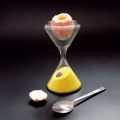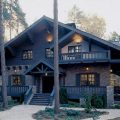Any transplant is stressful for the plant,especially for an adult. It is preferable to plant a large tree in winter, while the soil is hard enough. At this time, the transplanted tree does not require care. With an adult tree, many factors affecting its survival should be taken into account. Naturally, a healthy tree without frost cracks, sunburn, mechanical damage will cause much less trouble for the owners. An important condition is the proper preparation of a large tree for transplantation. Thus, a tree with a trunk diameter of 15 cm should have a lump of at least 150 cm. Without proper care, a transplanted tree is threatened by many dangers, regardless of whether it is a large tree or not. Drying out due to the lack of necessary watering, deterioration in appearance due to insufficient application of special fertilizers for tree nutrition and stimulants, the occurrence of fungal and viral diseases - all these factors do not add beauty and decorativeness to any plant. Large trees can generally die very quickly if they are not systematically cared for. Particular attention should be paid to large trees in the first year after planting and immediate measures should be taken if any negative changes occur, such as slowing growth of shoots, the appearance of small and pale foliage.
What does the future prepare for us?
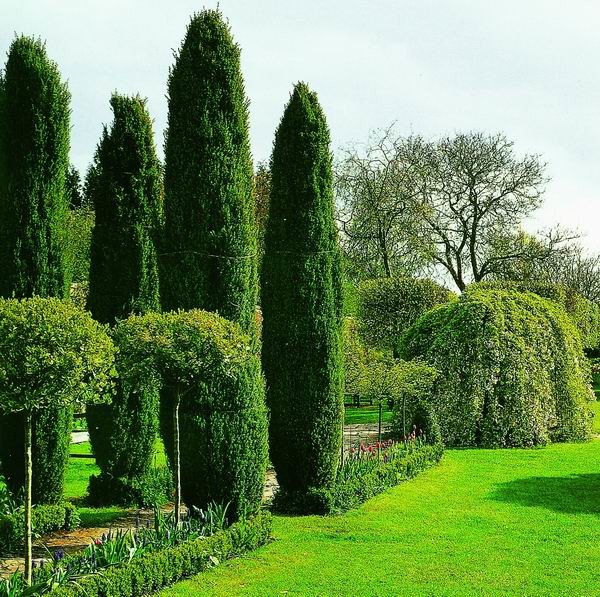 Tree transplantationWhat other troubles are there?freshly transplanted large trees? Their root system can rot if not properly moistened, which is possible with a certain relief form. Sometimes the groundwater rises, causing the area to become swampy. If the planting material has already been affected by a disease or pest, then after transplantation, as a rule, all ailments become worse. For conifers, stem pests, hermes, scale insects are dangerous, for deciduous trees - leaf-eating, leaf rollers and flower beetles, for fruit trees - codling moths. The spectrum of diseases to which trees are susceptible is very wide, recently coral spot, root sponges and rot have become widespread. How to deal with all these misfortunes? It is necessary to regularly inspect the tree, carry out regular chemical treatments, stimulate the growth of the root system of a large tree in the process of adaptation. In a word, everything possible must be done to increase the immunity of the tree. The vigor of the efforts determines 90% of the survival rate of the plant. The remaining 10% is a separate group of factors that cannot be changed during post-warranty care. These include: the condition of the tree before transportation to a new location, in other words, whether the tree grew strong and healthy in the nursery, as well as the conditions of its transportation (that is, how carefully and professionally the specimen was transported) and much more. Any planted tree requires constant monitoring and care. For two to three years after planting, large trees must be constantly monitored. The fastening of trees to the supports should be checked systematically, and the location of the fixed bandage on the trunk, to which the guy wire is attached, should be changed from time to time, which is necessary to prevent the tree from tilting or falling over in the wind. By the way, good tension that does not allow the tree to wobble is also important for the rooting of the tree: if the trunk is firmly fixed, it is easier for the roots to develop (root hairs are torn from tilting).
Tree transplantationWhat other troubles are there?freshly transplanted large trees? Their root system can rot if not properly moistened, which is possible with a certain relief form. Sometimes the groundwater rises, causing the area to become swampy. If the planting material has already been affected by a disease or pest, then after transplantation, as a rule, all ailments become worse. For conifers, stem pests, hermes, scale insects are dangerous, for deciduous trees - leaf-eating, leaf rollers and flower beetles, for fruit trees - codling moths. The spectrum of diseases to which trees are susceptible is very wide, recently coral spot, root sponges and rot have become widespread. How to deal with all these misfortunes? It is necessary to regularly inspect the tree, carry out regular chemical treatments, stimulate the growth of the root system of a large tree in the process of adaptation. In a word, everything possible must be done to increase the immunity of the tree. The vigor of the efforts determines 90% of the survival rate of the plant. The remaining 10% is a separate group of factors that cannot be changed during post-warranty care. These include: the condition of the tree before transportation to a new location, in other words, whether the tree grew strong and healthy in the nursery, as well as the conditions of its transportation (that is, how carefully and professionally the specimen was transported) and much more. Any planted tree requires constant monitoring and care. For two to three years after planting, large trees must be constantly monitored. The fastening of trees to the supports should be checked systematically, and the location of the fixed bandage on the trunk, to which the guy wire is attached, should be changed from time to time, which is necessary to prevent the tree from tilting or falling over in the wind. By the way, good tension that does not allow the tree to wobble is also important for the rooting of the tree: if the trunk is firmly fixed, it is easier for the roots to develop (root hairs are torn from tilting).
How to provide care
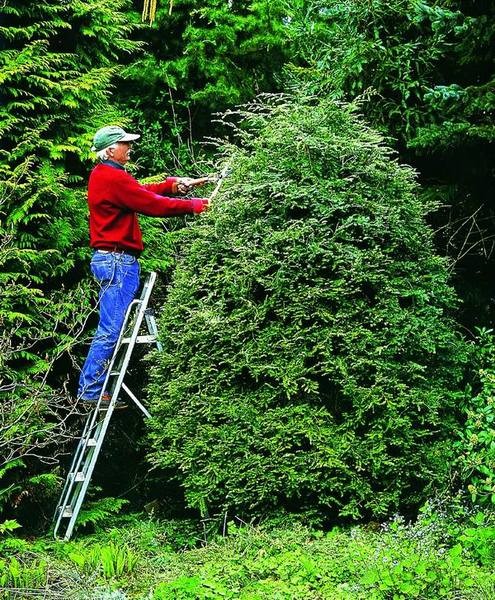 From a legal point of view, for the implementationFor post-warranty maintenance, you only need one thing - to conclude an agreement between the customer and the contractor, stipulating all the points of plant care. There are two options for post-warranty care. The first option is a contract for seasonal maintenance. It includes regular watering depending on the weather and climate conditions and site features, treating the tree with chemicals (if necessary) and fertilizing the plants. At the initial stages, diagnostics are carried out: the content of various substances in the soil is clarified. Subsequently, as a result of fertilizing the tree, its balance is brought to an ideal level. The second option is one-time visits at the customer's request. A team with a dendrologist on site clarifies the scope of work and carries out the necessary activities. With the first option, monitoring on the site is regularly carried out by a specialist who directly observes the progression picture. In the case of one-time calls, this moment is missed, and the issue of tree infestation with pests or diseases is more acute. On average, landscape companies estimate post-warranty care for one tree during the season at 80-100 dollars. This includes pruning, pest control, and fertilizing with rooting stimulants. The standard number of visits to one site per season is from eight to ten. At the same time, the company can take on the care of large trees planted by another company, but only if it is profitable for them. In other words, a specialist will not go anywhere for the sake of one or even five trees, because the money earned in one visit is hardly enough to cover the trip itself. It is a different matter if 20 large trees are planted on the site or complex care for the entire garden is expected, which has enough work. A company interested in the trees it has planted taking root well can send a specialist to the site even after the warranty period has expired if there is a risk of powdery mildew affecting the plantings or an aphid infestation is observed in the area. However, the implementation and payment of such force majeure measures should be discussed in advance with a representative of the landscape company. According to some experts, in the first year after transplanting large trees, as a rule, they should not be fed with anything other than the domestically produced drug "Kornevin", which stimulates root formation. However, the main remedy recommended by experienced landscapers is not just regular, but very frequent watering. And here a problem arises, which Moscow designers call "the gardeners' problem". Because, by and large, this very regular watering should be carried out by qualified gardeners. And there are none.
From a legal point of view, for the implementationFor post-warranty maintenance, you only need one thing - to conclude an agreement between the customer and the contractor, stipulating all the points of plant care. There are two options for post-warranty care. The first option is a contract for seasonal maintenance. It includes regular watering depending on the weather and climate conditions and site features, treating the tree with chemicals (if necessary) and fertilizing the plants. At the initial stages, diagnostics are carried out: the content of various substances in the soil is clarified. Subsequently, as a result of fertilizing the tree, its balance is brought to an ideal level. The second option is one-time visits at the customer's request. A team with a dendrologist on site clarifies the scope of work and carries out the necessary activities. With the first option, monitoring on the site is regularly carried out by a specialist who directly observes the progression picture. In the case of one-time calls, this moment is missed, and the issue of tree infestation with pests or diseases is more acute. On average, landscape companies estimate post-warranty care for one tree during the season at 80-100 dollars. This includes pruning, pest control, and fertilizing with rooting stimulants. The standard number of visits to one site per season is from eight to ten. At the same time, the company can take on the care of large trees planted by another company, but only if it is profitable for them. In other words, a specialist will not go anywhere for the sake of one or even five trees, because the money earned in one visit is hardly enough to cover the trip itself. It is a different matter if 20 large trees are planted on the site or complex care for the entire garden is expected, which has enough work. A company interested in the trees it has planted taking root well can send a specialist to the site even after the warranty period has expired if there is a risk of powdery mildew affecting the plantings or an aphid infestation is observed in the area. However, the implementation and payment of such force majeure measures should be discussed in advance with a representative of the landscape company. According to some experts, in the first year after transplanting large trees, as a rule, they should not be fed with anything other than the domestically produced drug "Kornevin", which stimulates root formation. However, the main remedy recommended by experienced landscapers is not just regular, but very frequent watering. And here a problem arises, which Moscow designers call "the gardeners' problem". Because, by and large, this very regular watering should be carried out by qualified gardeners. And there are none.
I'd been born a gardener
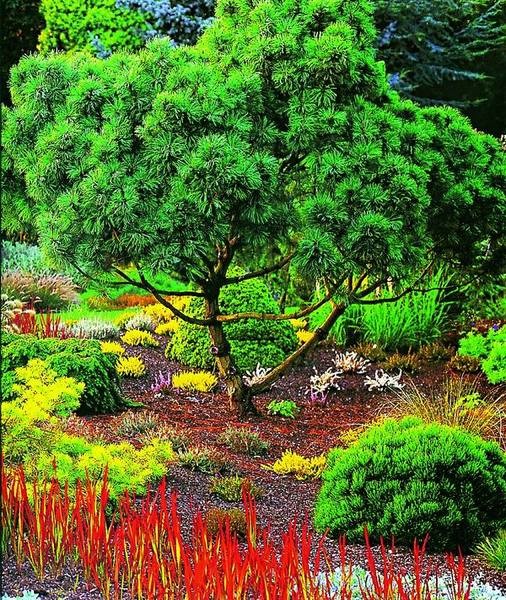 “Very often our clients ask usпорекомендовать им хорошего садовника, – говорит Юлия Безматерных, ландшафтный дизайнер известной компании “Экодизайн”.- Что вполне логично – ухаживать за садом должен именно садовник, который хорошо знает каждое дерево на данном участке и уже в силу этого имеет преимущество перед пришлым специалистом. Но это в идеале. В реальности же найти квалифицированного садовника трудно…”Сейчас садовники зачастую выполняют роль уборщиков, занимаясь в основном сгребанием опавших листьев, подметанием дорожек, перекидыванием компоста, обрезанием веток и иным тяжелым физическим трудом. Естественно, все это делать необходимо, но помимо развитых мускулов садовник обязан иметь солидный запас специальных знаний, и этот “интеллектуальный багаж” должен расти, потому что периодически появляются новые преператы и разрабатываются новые методы ухода за растениями. А уж если хозяева сада решили обзавестись крупномерами, за которыми нужен глаз да глаз, – “мужик с лопатой” из соседней деревни вряд ли сможет осуществлять за этими хоть и взрослыми, но такими деликатными “персонажами” полноценный уход. Тем более, что, судя по жалобам многих ландшафтников, выполнять сложные рекомендации знающих людей “садоводы от сохи” не спешат. А высококвалифицированый специалист с высшим образованием вряд ли согласится сидеть безвылазно на чужом участке, таская ведрами воду к свежепосаженному дубу. В результате многим клиентам ничего, кроме обращения в ландшафтную фирму, не остается… “Наша компания осуществляет уход и за теми деревьями, которые непосредственно сажали мы (хозяева участков очень часто подписывают договор о дальнейшем обслуживании), и за теми, которые были посажены не нами. В нашей компании дерево при высадке ставится на двухлетнюю гарантию,- рассказывает Константин Морозов, бригадир отдела дендрологии компании “Палисад”. В течение этого времени как минимум раз в две недели специалист выезжает на участок и осматривает дерево. Если, например, прогнозируется заболачивание, то перед или во время посадки укладывается дренаж (общий системный или же для каждого дерева отдельный). Это способствует поступлению большего объема воздуха к корням. Через эту же дрену производится полив и подкормка. В дальнейшем дренаж позволяет снизить трудозатраты по уходу за деревом. Деревья посещаются и зимой, в то время, когда у них наступает период покоя. Их осматривают на наличие морозобойных трещин, которые часто поражают широколиственные породы: каштаны, липы. Хвойные деревья (особенно привезенные с юга России, из Германии или Венгрии) не любят яркого зимнего солнца. С этим мы тоже боремся – затеняем их различными способами.”А теперь обратимся к опыту зарубежных коллег. Известно, что некоторые немецкие ландшафтные бюро обрабатывают поставляемые ими крупномеры специальным “консервирующим” составом, который закупоривает поры листьев и почки, препятствуя испарению влаги, что ускоряет процесс адаптации дерева. Вообще западноевропейские традиции реабилитации пересаженных крупномеров значительно отличаются от российских. Идя на поводу у капризных заказчиков, желающих во что бы то ни стало сразу же после пересадки иметь на своем участке не только взрослое и достаточно высокое, но и пышное дерево, некоторые российские дизайнеры обрезают у крупномера только поврежденные при пересадке ветки, чтобы сохранить красивую крону. Плюс этого – пересаженное дерево сразу же становится украшением сада. Минус – такой крупномер, подвергнутый “щадящей” обрезке, медленно приживается и зачастую теряет больше ветвей. В хороших же немецких питомниках дерево перед “передислокацией” подвергается жесткой обрезке. В результате на новое место приезжает только ствол с короткими “пеньками”, оставшимися от веток. Однако уже через год этот “инвалид” превращается в здоровое дерево с пышной кроной и приживается так, что отечественных “коллег” просто зависть берет. “Практически все виды деревьев и кустарников, адаптированные к выращиванию в средней полосе и должным образом подготовленные и пересаженные, хорошо приживаются и не требуют сложных манипуляций по уходу за ними. Из лиственных это липа, каштан, различные сорта кленов, маньчжурский орех. Из хвойных растений достаточно популярными являются голубая и колючая ели, пихты, кедровые сосны” – считает директор ООО “ЛандшафтДизайнПроект”, к.п.н. Оксана Шевченко.Многое в данном случае зависит от местности. Где-то лучше приживается одно дерево, где-то другое. Но, наверное, оптимальный вариант – это наши отечественные ели (наиболее подходящие параметры – высота от 3 до 12 м). Хуже всего приживаются изначально больные деревья. Как правило, это привезенный издалека посадочный материал. Если заказчику дерево очень понравилось, его предупреждают о том, что дереву тяжело будет прижиться. И если хозяин все же соглашается на его посадку, делается все возможное, чтобы это дерево спасти.
“Very often our clients ask usпорекомендовать им хорошего садовника, – говорит Юлия Безматерных, ландшафтный дизайнер известной компании “Экодизайн”.- Что вполне логично – ухаживать за садом должен именно садовник, который хорошо знает каждое дерево на данном участке и уже в силу этого имеет преимущество перед пришлым специалистом. Но это в идеале. В реальности же найти квалифицированного садовника трудно…”Сейчас садовники зачастую выполняют роль уборщиков, занимаясь в основном сгребанием опавших листьев, подметанием дорожек, перекидыванием компоста, обрезанием веток и иным тяжелым физическим трудом. Естественно, все это делать необходимо, но помимо развитых мускулов садовник обязан иметь солидный запас специальных знаний, и этот “интеллектуальный багаж” должен расти, потому что периодически появляются новые преператы и разрабатываются новые методы ухода за растениями. А уж если хозяева сада решили обзавестись крупномерами, за которыми нужен глаз да глаз, – “мужик с лопатой” из соседней деревни вряд ли сможет осуществлять за этими хоть и взрослыми, но такими деликатными “персонажами” полноценный уход. Тем более, что, судя по жалобам многих ландшафтников, выполнять сложные рекомендации знающих людей “садоводы от сохи” не спешат. А высококвалифицированый специалист с высшим образованием вряд ли согласится сидеть безвылазно на чужом участке, таская ведрами воду к свежепосаженному дубу. В результате многим клиентам ничего, кроме обращения в ландшафтную фирму, не остается… “Наша компания осуществляет уход и за теми деревьями, которые непосредственно сажали мы (хозяева участков очень часто подписывают договор о дальнейшем обслуживании), и за теми, которые были посажены не нами. В нашей компании дерево при высадке ставится на двухлетнюю гарантию,- рассказывает Константин Морозов, бригадир отдела дендрологии компании “Палисад”. В течение этого времени как минимум раз в две недели специалист выезжает на участок и осматривает дерево. Если, например, прогнозируется заболачивание, то перед или во время посадки укладывается дренаж (общий системный или же для каждого дерева отдельный). Это способствует поступлению большего объема воздуха к корням. Через эту же дрену производится полив и подкормка. В дальнейшем дренаж позволяет снизить трудозатраты по уходу за деревом. Деревья посещаются и зимой, в то время, когда у них наступает период покоя. Их осматривают на наличие морозобойных трещин, которые часто поражают широколиственные породы: каштаны, липы. Хвойные деревья (особенно привезенные с юга России, из Германии или Венгрии) не любят яркого зимнего солнца. С этим мы тоже боремся – затеняем их различными способами.”А теперь обратимся к опыту зарубежных коллег. Известно, что некоторые немецкие ландшафтные бюро обрабатывают поставляемые ими крупномеры специальным “консервирующим” составом, который закупоривает поры листьев и почки, препятствуя испарению влаги, что ускоряет процесс адаптации дерева. Вообще западноевропейские традиции реабилитации пересаженных крупномеров значительно отличаются от российских. Идя на поводу у капризных заказчиков, желающих во что бы то ни стало сразу же после пересадки иметь на своем участке не только взрослое и достаточно высокое, но и пышное дерево, некоторые российские дизайнеры обрезают у крупномера только поврежденные при пересадке ветки, чтобы сохранить красивую крону. Плюс этого – пересаженное дерево сразу же становится украшением сада. Минус – такой крупномер, подвергнутый “щадящей” обрезке, медленно приживается и зачастую теряет больше ветвей. В хороших же немецких питомниках дерево перед “передислокацией” подвергается жесткой обрезке. В результате на новое место приезжает только ствол с короткими “пеньками”, оставшимися от веток. Однако уже через год этот “инвалид” превращается в здоровое дерево с пышной кроной и приживается так, что отечественных “коллег” просто зависть берет. “Практически все виды деревьев и кустарников, адаптированные к выращиванию в средней полосе и должным образом подготовленные и пересаженные, хорошо приживаются и не требуют сложных манипуляций по уходу за ними. Из лиственных это липа, каштан, различные сорта кленов, маньчжурский орех. Из хвойных растений достаточно популярными являются голубая и колючая ели, пихты, кедровые сосны” – считает директор ООО “ЛандшафтДизайнПроект”, к.п.н. Оксана Шевченко.Многое в данном случае зависит от местности. Где-то лучше приживается одно дерево, где-то другое. Но, наверное, оптимальный вариант – это наши отечественные ели (наиболее подходящие параметры – высота от 3 до 12 м). Хуже всего приживаются изначально больные деревья. Как правило, это привезенный издалека посадочный материал. Если заказчику дерево очень понравилось, его предупреждают о том, что дереву тяжело будет прижиться. И если хозяин все же соглашается на его посадку, делается все возможное, чтобы это дерево спасти.
The Makropulos
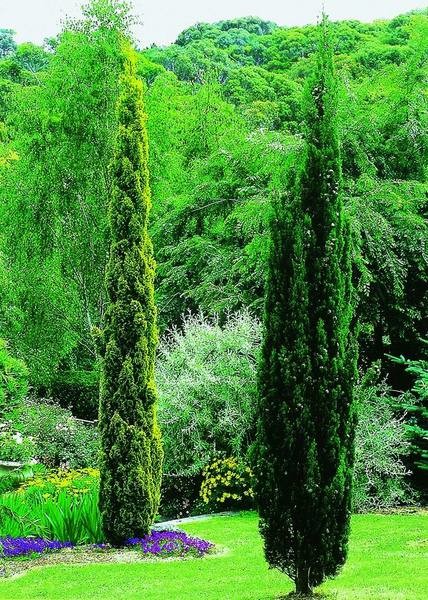 Saving a difficult tree can often only be donesome kind of magic elixir of life and youth. Ordinary water can sometimes become such a "Makropoulos remedy". The key to the tree's survival is the creation of an optimal humidity regime. You've already guessed - we are talking about the notorious watering again. A plant that has lost part of its suction system during transplantation needs increased watering, which begins in April, after the root zone has thawed. In the first summer, trees are watered 2-3 times a week in rainy weather, and 3-5 times in dry weather. The watering rate is 30 liters of water per 1 m of tree per day. The best watering is directly under the roots. It would not be superfluous to spray the crown of the plant with preparations that promote cellular restoration. And, of course, tree trunk circles for moisture retention and application of special fertilizers that provide nutrition, as well as biologically active preparations. Along with watering and sprinkling the crowns, growth stimulants have a positive effect on large-sized trees. They are introduced into the root system zones simultaneously with watering. Preparations that stimulate root growth are also used.
Saving a difficult tree can often only be donesome kind of magic elixir of life and youth. Ordinary water can sometimes become such a "Makropoulos remedy". The key to the tree's survival is the creation of an optimal humidity regime. You've already guessed - we are talking about the notorious watering again. A plant that has lost part of its suction system during transplantation needs increased watering, which begins in April, after the root zone has thawed. In the first summer, trees are watered 2-3 times a week in rainy weather, and 3-5 times in dry weather. The watering rate is 30 liters of water per 1 m of tree per day. The best watering is directly under the roots. It would not be superfluous to spray the crown of the plant with preparations that promote cellular restoration. And, of course, tree trunk circles for moisture retention and application of special fertilizers that provide nutrition, as well as biologically active preparations. Along with watering and sprinkling the crowns, growth stimulants have a positive effect on large-sized trees. They are introduced into the root system zones simultaneously with watering. Preparations that stimulate root growth are also used.




